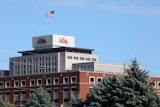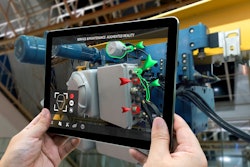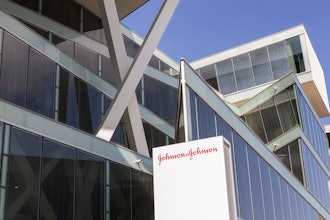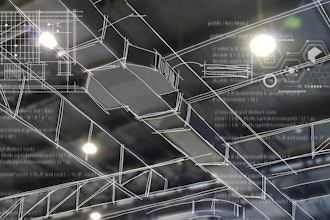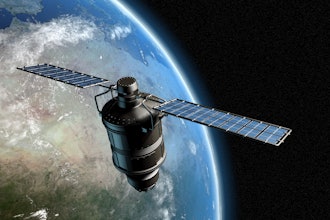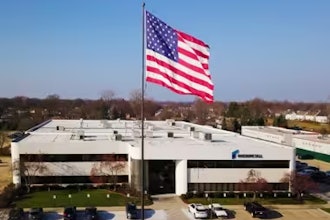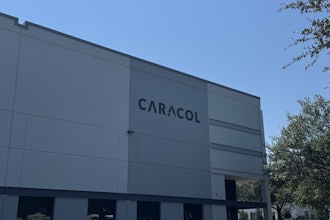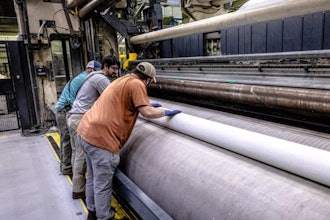There is nothing quite so pervasive as the air you breathe. In large facilities like industrial warehouses, manufacturing plants and distribution centers, managing the indoor air quality of a facility can be challenging on multiple fronts. While there are a number of conventional options you can turn to –– ranging from HVAC units and high-speed floor fans to swamp coolers –– these traditional options often fail to provide comprehensive solutions. Conversely, high-volume, low-speed (HVLS) fans are able to mobilize and de-stratify large volumes of air in a way that truly “clears the air” of any facility –– enabling HVAC systems to operate more efficiently while also optimizing employee comfort and health in unconditioned environments.
The Importance Of Air Quality
But before we get further into the solution, let’s take a closer look at the problem. The term “indoor air quality” refers to the air quality within and around buildings and structures, particularly as it relates to the health and comfort of building occupants. Poor air quality –– which includes an excess of hot or cold air, indoor pollutants and stagnant air –– can cause labored breathing and illness in employees while also posing product quality control risks such as spoilage. In fact, the U.S. Department of Labor’s Occupational Safety and Health Administration (OSHA) reported as part of their heat safety campaign that dozens of employee fatalities occur each year with thousands more workers falling ill due to working in extreme heat or humid conditions.
Air quality is directly linked to proper air circulation, which can be achieved by HVLS installations that are able to move large volumes of air with minimal energy. By consistently providing large-scale airflow, HVLS fans are able to regulate temperature, as well as prevent stagnant air and a dust-riddled environment. High air turns in particular eliminate toxic airborne chemicals at a much more rapid pace. In addition to pollutants, HVLS fans can also control a facility’s moisture — specifically where it relates to condensation, which can form on the floor in between two different climate-controlled environments and present a significant safety hazard. Proper indoor air movement quickly dries this condensation to reduce fall risks, pollutants and bacteria associated with unchecked moisture.
Under OSHA law, employers are responsible for eliminating these known safety hazards, so making investments in environment-regulating solutions like HVLS fans are not only a benefit but also a critical need.
One of our customers in the Nashville, TN region found themselves in this very scenario. Relying on pedestal fans to keep their workforce cool in their 55-foot by 100-foot unconditioned warehouse during the brutal Tennessee summer, they found the fans only provided relief for those employees working within the fans’ immediate vicinity. As a result, a facility manager fell sick from the heat and was not able to return to work, and the facility itself was forced to close its doors during the hottest portion of the summer. Considering these challenges, Hunter Industrial installed two 14-foot HVLS fans, which generated a consistent breeze throughout the warehouse, and their managers and team members took immediate notice of the differences in temperature. Since then, the warehouse has remained open all year-long with an uninterrupted rate of productivity, and workers have indicated the warehouse can actually be a more enjoyable environment than other sectors of the facility that are air conditioned.
A Dual Health + Bottom Line Impact
We have seen this company’s experience replicated across industries with the adoption of HVLS systems translating into healthier, more comfortable work environments that in turn lead to reduced employee complaints and absentee days and boosts in overall productivity.
A 2014 study by the Indian Statistical Institute entitled “The Impact of Temperature on Productivity and Labor Supply: Evidence from Indian Manufacturing” showed that labor productivity decreases in high-temperature environments — with productivity reducing three percent per increase in one degree Celsius. The study also stated that “sustained heat may reduce worker attendance.”
With this in mind, we worked with a remanufacturing and logistics company who was able to improve workforce conditions and productivity levels after installing seven 24-foot HVLS fans in their unconditioned 300,000-square-foot warehouse with 36-foot ceilings. Their previous cooling methods included pedestal and barrel fans, which proved ineffective in cooling down their entire workforce, coupled with the inconvenience of papers and mechanical parts blowing around because of the fans’ sporadic air movement. The company had also experimented with swamp coolers, but the resulting maintenance proved to be a headache. In the end, HVLS fans were able to provide them increased workplace comfort across the seasons, running the fans 24/7 to prevent the buildup of stagnant air and heat. In the words of the company’s Vice President of Supply Chain, “[HVLS] fans provide uniform comfort year-round for our nearly 230 employees, which has in turn increased worker productivity. After moving to our new facility and installing these industrial fans, we’ve received no employee complaints related to workplace comfort … They are essential in creating an optimal, healthy environment in our facility from ceiling to floor.”
HVLS Fans VS Conventional Options
Having discussed the need for and benefit of HVLS installations, it may still leave the question — what really sets HVLS fans apart from conventional options?
Some of the key differentiators between an HVLS fan versus traditional high-speed fan options are the minimized energy consumption per square foot, the cost savings of about $1 per day to operate, as well as reduced noise. In addition, HVLS fans’ cordless design allows for a safer industrial environment, eliminating trip hazards –– an important factor considering many plant and facility managers identify cords as one of the top workplace hazards. In fact, the overall direct interaction between an employee and a fan is virtually eliminated with many HVLS models. This feature is compounded by the maintenance-free aspect of those HVLS fans with direct drive motors, which also eliminate the risk of oil leaks posed by traditional gearbox motors.
Another feature of the right HVLS fan model is that it will also automatically switch off when a facility’s sprinkler system turns on to prevent water from spreading the wrong direction.
But the primary distinguishers come down to enhanced coverage area and efficiency. One HVLS fan can replace as many as 10-20 floor flans or 12 48-inch barrel fans, effectively creating a 10- to 12-degree perceived temperature difference in the warmer summer months. Equally as important during the winter months, a quality HVLS solution will continually push warm air trapped at the ceiling level back down to the floor –– evenly distributing warm air and allowing HVAC systems to work more efficiently which can save up to 30 percent on heating costs.
A Comprehensive Solution
Considering all these factors, HLVS fans are emerging as a comprehensive solution to improve energy savings, cost savings and workforce health and safety conditions across the board and across industries. Choosing the right HVLS solution can both improve a company’s wellness standards while boosting its bottom line.
Jeff Chastain is Hunter Industrial Senior Vice President & General Manager.
